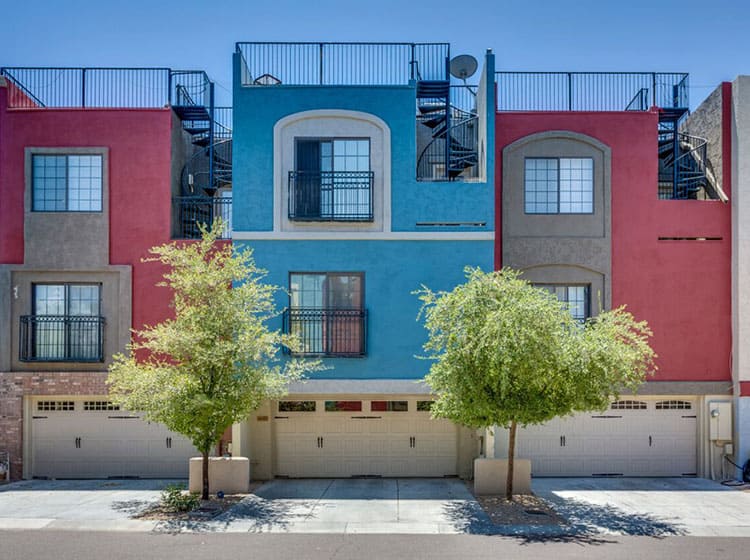Prior To Embarking On Your Painting Project, It Is Crucial To Comprehend The Main Differences Between Interior And Exterior Paint. This Understanding Can Significantly Influence The Success Of Your Work
Prior To Embarking On Your Painting Project, It Is Crucial To Comprehend The Main Differences Between Interior And Exterior Paint. This Understanding Can Significantly Influence The Success Of Your Work
Blog Article
Write-Up Created By-Fisker Bernstein
When you're picking between exterior and interior paint, it's vital to recognize their fundamental distinctions that affect both performance and aesthetics. Inside paints are crafted for reduced VOC degrees and smoother surfaces, making them optimal for indoor spaces, while exterior paints are made to withstand severe weather and UV direct exposure. Each type serves a distinct function, yet understanding when to utilize one over the various other can greatly influence your task's result. So, what factors should you think about when making your choice?
Structure and Formula
When selecting in between exterior and interior paint, understanding their make-up and formula is critical. Inside paints generally include a reduced amount of unstable organic substances (VOCs), making them safer for interior air high quality. You'll notice they frequently have a smoother coating, which enhances their ability to withstand spots and allows for simpler cleaning. They're made to endure the roughness of indoor settings, consisting of differing moisture degrees and temperature variations.
On straight line construction , exterior paints are developed to endure harsher conditions. They normally consist of greater degrees of pigments and ingredients to withstand fading from UV rays, in addition to to avoid mold and mold and mildew growth. Their make-up consists of much more binders and resins, which offer better adhesion to surface areas subjected to the aspects. residential painting standards makes sure the paint can hold up against rainfall, snow, and rising and fall temperatures without peeling off or splitting.
Efficiency and Durability
Evaluating efficiency and resilience is vital when picking between exterior and interior paint. Inside paint is created for surfaces that experience much less deterioration. It normally stands up to fading and scuffing, making it perfect for living spaces and rooms. Nevertheless, it might not hold up well in high-moisture areas like kitchens and bathrooms without appropriate formula.
On the other hand, outside paint faces harsher problems. It's crafted to hold up against UV rays, rain, and temperature level variations. This kind of paint typically includes ingredients that avoid mold and mildew and mildew development, making sure durability in different climates. When you use outside paint, you can anticipate it to last several years longer than indoor paint, provided it's used correctly.
Another key distinction lies in the coating options. Interior paints often have a selection of finishes for visual charm, while outside paints focus on resilience over luster. If you're looking for something that can handle the elements, outside paint is your best choice.
On the other hand, if you're focused on indoor aesthetics with less issue for extreme problems, indoor paint could be appropriate. Eventually, your choice ought to straighten with the certain needs of the environment.
Aesthetic Considerations
A fresh coat of paint can transform a space, but visual considerations play an important duty in your choice in between exterior and interior options. When you're choosing paint, consider the mood you want to produce. Inside paint enables you to check out a larger variety of shades and finishes, enabling you to express your personal design and improve your home's atmosphere. Whether you opt for soft pastels or vibrant shades, the appropriate interior paint can make your areas really feel comfortable, vivid, or calm.
On the other hand, exterior paint requires to straighten with your home's style and the surrounding setting. Here, you're not simply making a design statement; you're additionally considering aesthetic allure. Choosing shades that integrate with your community can improve your home's value and aesthetic allure. Keep in mind that outside paint is additionally subject to fading and climate changes, so choosing an ageless color can save you from frequent repainting.
Eventually, think about how each choice fits your vision. By aligning your paint option with your desired visual, you can develop areas that show your character while maintaining performance.
Verdict
When it pertains to choosing paint, recognizing the essential differences in between interior and exterior options is vital. Interior paints concentrate on aesthetic appeals and low VOCs, making them ideal for enhancing your indoor rooms. In contrast, outside paints are created for durability and weather resistance, safeguarding your home from the aspects. By considering your particular requirements and the environment, you can confidently pick the best paint to attain the appearance and long life you desire for your room.
